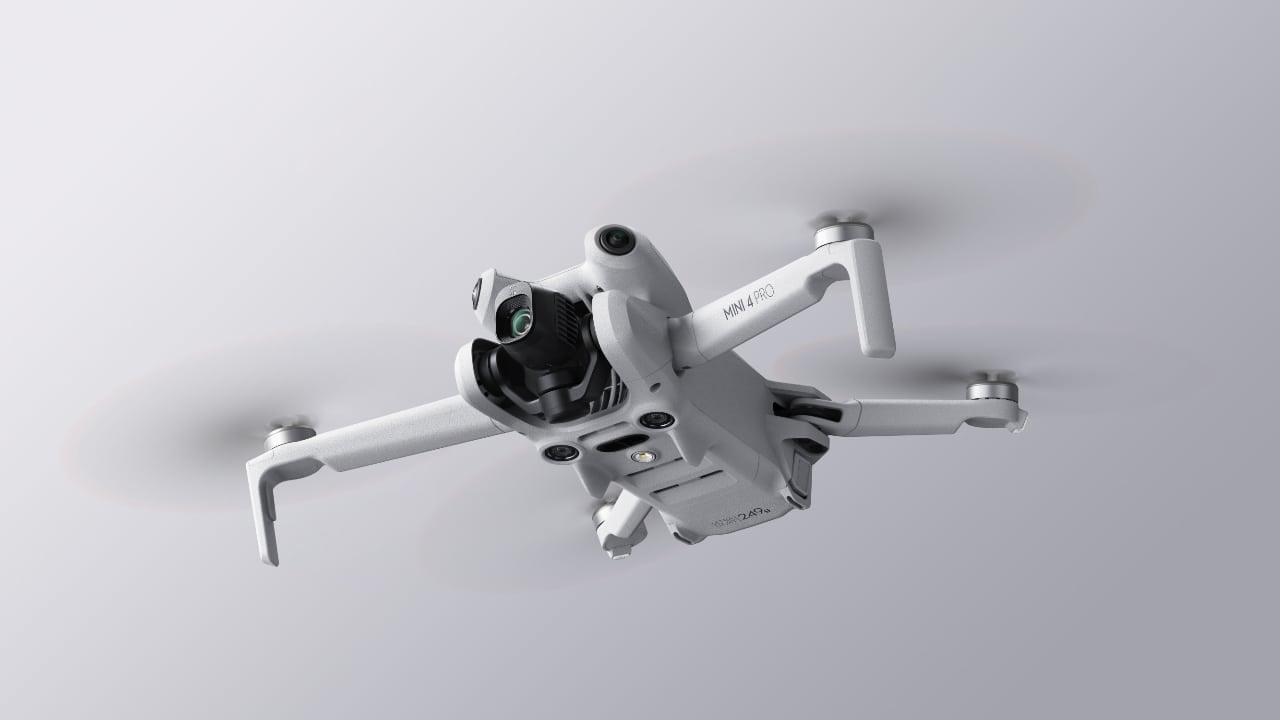
There's not much in the spec of the DJI Mini 4 Pro that creates clear blue water between it and its predecessor, but given that the Mini 3 Pro reset the entry-level drone benchmark, that's possibly no bad thing.
Weighing the critical sub-249g to duck under European drone legislation, the new DJI Mini 4 Pro buzzes along a year and a half after its predecessor and boasts the same 1/1.3-inch CMOS sensor, New Image-Processing Platform and dual native ISO fusion. It features: f/1.7 aperture, 48MP image resolution, 4K/60fps HDR video, and Slo-Mo shooting at 4K/100fps. 2.4μm pixel and an enhanced noise reduction algorithm in Night Shots video mode promises to deliver clear, cleaner footage even in low-light conditions.
And if all that sounds a bit familiar, well, it is. Apart from a few software tweaks, the Mini 4 Pro is almost exactly the same spec as the Mini 3 Pro - we’ll round up what’s new at the end.
True Vertical Shooting gives you portrait images optimized for social media and smartphone playback. A 60° large-angle tilt makes for fluid camera motion, while digital video zoom magnifies photos up to 2x and videos up to 4x. 10-bit D-Log M recording and HLG ensures the natural colors and brightness remain true-to-life without adjustment or format conversion due to its high dynamic range.
Flying-wise, omnidirectional obstacle sensing, utilizing multiple wide-angle and a pair of downward vision sensors to detect obstructions from all directions, protects your investment. Complemented by Advanced Pilot Assistance Systems (APAS), the drone features automatic braking and obstacle bypass.
Flight time is up to 34 minutes, which can be further extended to 45 minutes using the Intelligent Flight Battery Plus (which is not sold in Europe as that would make the aircraft too heavy). O4 video transmission ensures responsive control and smooth 1080p/60fps FHD video transmission capability from distances of up to 20 km, though, as ever, the RTH feature will kick in way before you ever reach that distance.
The Mini 4 Pro offers three intuitive methods for capturing shots—Spotlight, Point of Interest, and ActiveTrack 360°, which allows users to bypass obstacles and achieve smoother, more stable tracking thanks to omnidirectional obstacle sensing. There is also the usual range of master shots, quickshots, and more, to make your piloting skills look way more impressive than they are.

So, picking through all that, there’s not much new until you get to the software. 4K slo-mo is new, as is the addition of D-Log M, as used in the Mavic series, which will ensure more consistency in post where the sub-250g drone just had to be used as a b-drone, so to speak. Night Shots is also new. And that’s about it. It’s iterative rather than impactful, so if you already have a Mini 3 Pro you’re unlikely to want to choose this as the next step on your upgrade path. If you don’t, then the entry-level for a decent drone that can take decent pictures just got that bit more capable.
Talking of which, pricing starts at $759 for the aircraft and the DJI RC-N2 smartphone-paired remote, rising to $1159 for the Fly More Combo Plus. Availability is immediate.
Tags: Production Drones


Comments